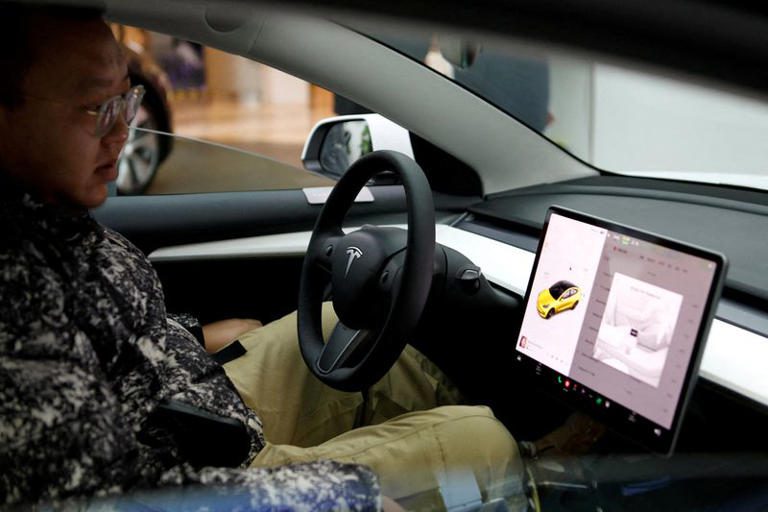- Tesla shifts strategy, plans to utilize Chinese data for self-driving system development.
- Considering establishment of data center in China for algorithm training.
- Move underscores Tesla’s commitment to AI amidst slowing EV demand.
- Challenges include collaboration with Chinese partners and sourcing hardware.
- Elon Musk’s discussions in Beijing signal push for streamlined data transfer permissions.
- Utilizing Chinese data could be pivotal for Tesla’s market presence and adoption of autonomous driving.
Main AI News:
In a strategic move spearheaded by Elon Musk, Tesla is forging ahead with plans to harness data from China to advance its global self-driving technology ambitions. Sources familiar with the matter reveal that Tesla is actively considering establishing a data center in China to facilitate the training of algorithms crucial for the development of fully autonomous vehicles.
This endeavor marks a significant departure from Tesla’s previous focus on obtaining approval from Chinese regulators to transfer data generated by its electric vehicles (EVs) out of the country for its “Full Self Driving” (FSD) system. The company is now exploring the possibility of leveraging local data processing capabilities within China itself.
The acceleration of Tesla’s efforts underscores its commitment to leveraging breakthroughs in artificial intelligence (AI) amidst a landscape of slowing EV demand and intensifying competition. The proposed utilization of vehicle data from China for AI development is particularly noteworthy at a time when the U.S. government is tightening restrictions on the transfer of AI technology to China.
Tesla’s potential establishment of a data center in China presents both opportunities and challenges. Collaboration with a Chinese partner would be essential, and sourcing hardware could pose logistical hurdles. Talks with Nvidia regarding the acquisition of graphic processing units for a China data center exemplify the intricate negotiations involved, especially considering U.S. sanctions restricting the sale of advanced chips in China.
The impetus for Tesla’s intensified focus on Chinese data was catalyzed during Elon Musk’s recent visit to Beijing, where discussions with government officials, including Premier Li Qiang, centered on streamlining data transfer permissions and exploring the feasibility of a local data center. Musk also broached the prospect of licensing Tesla’s FSD systems to Chinese EV manufacturers, further underscoring the company’s commitment to leveraging the vast potential of the Chinese market.
China’s prominence as the world’s largest car market, coupled with its extensive fleet of sensor-equipped vehicles capable of data collection in complex urban environments, makes it a crucial resource for automakers and AI developers alike. Despite previous reservations voiced by Musk regarding a China-based data center, the strategic imperative of utilizing local data appears increasingly compelling.
Analysts view Tesla’s potential rollout of FSD in China and its utilization of Chinese data for algorithm training as pivotal milestones that could significantly bolster the company’s market presence and further cement China’s role in driving the mass adoption of autonomous driving technologies.
While the road to fully autonomous vehicles remains long, Tesla’s confidence in the adaptability of its FSD system across diverse markets, coupled with the imperative for country-specific training, underscores its evolving identity as an AI-centric company poised to shape the future of mobility on a global scale.
Conclusion:
Tesla’s strategic pivot towards leveraging Chinese data for self-driving technology development signifies a significant shift in its approach amidst evolving market dynamics. By tapping into the vast potential of the Chinese market and streamlining data utilization processes, Tesla is positioning itself to enhance its competitive edge and accelerate the adoption of autonomous driving technologies globally. This move underscores the company’s proactive stance in navigating market challenges and capitalizing on emerging opportunities in the rapidly evolving automotive landscape.

